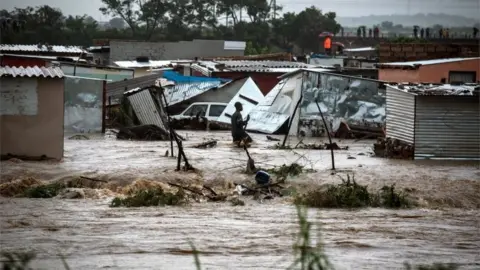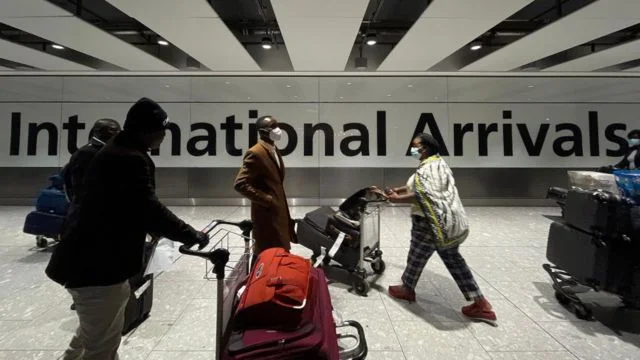The South African government has declared a national state of disaster following days of extreme weather that devastated several provinces.
It killed at least 92 people and leaving thousands homeless.
The declaration, issued on Thursday, allows the government to fast-track funding for relief and recovery operations across the hardest-hit areas.
The worst of the destruction was reported in the Eastern Cape, particularly around the city of Mthatha, where heavy rains, high winds, and rare snowfall combined to cripple infrastructure and overwhelm local emergency services.
Officials fear the death toll could rise further as search-and-rescue efforts continue in remote areas.
Mthatha Bears the Brunt of the Tragedy
Mthatha, a city in one of South Africa’s most impoverished regions, has become the epicenter of the flooding crisis.
According to officials, 31 children are confirmed among the dead.
Local media also reported that a school bus carrying students was swept away by floodwaters, with some passengers still unaccounted for.
Authorities are urging residents to come forward with reports of missing loved ones to aid ongoing search operations.
“Every report helps us focus our rescue teams and bring closure to affected families,” one provincial official stated.
In recognition of the lives lost, Thursday was declared a day of mourning in the Eastern Cape.
A memorial service was held at a school in Mthatha—one of the few buildings left standing after the storms.
Flags flew at half-mast, and grieving families gathered to remember those lost.
Over 4,000 People Displaced as Infrastructure Collapses
Government sources estimate that over 4,000 people have been displaced by the storms.
Many are now staying in temporary shelters after losing their homes to landslides, collapsing structures, or rising floodwaters.
The flooding has also severely damaged roads, bridges, and public utilities—interrupting water, electricity, and healthcare services across vast swathes of the Eastern Cape.
The provincial government confirmed that restoration of basic services is now a top priority, with crews already working to re-establish electricity and clean water supplies.
“This is a disaster on a scale we haven’t seen in years,” one emergency services coordinator told the press.
Funding Unlocked for Relief Efforts in Multiple Provinces
The national disaster declaration enables the South African government to allocate emergency funds and coordinate cross-provincial assistance.
Besides the Eastern Cape, other affected provinces include KwaZulu-Natal, the Western Cape, and the Free State—all of which experienced severe flooding, road closures, and infrastructure breakdowns during the storm.
Relief agencies have begun deploying food supplies, temporary shelters, and medical assistance to the worst-hit communities.
President Cyril Ramaphosa is expected to visit the region in the coming days to assess the damage and oversee the national response.
Climate Vulnerability and Long-Term Concerns
This disaster highlights the growing vulnerability of South Africa’s poorest regions to extreme weather events, which experts say are becoming more frequent and intense due to climate change.
The Eastern Cape, already facing developmental and service delivery challenges, is now grappling with the compounded effects of infrastructure collapse and humanitarian needs.
Local leaders and humanitarian groups are calling for long-term investment in climate resilience and better disaster preparedness.























